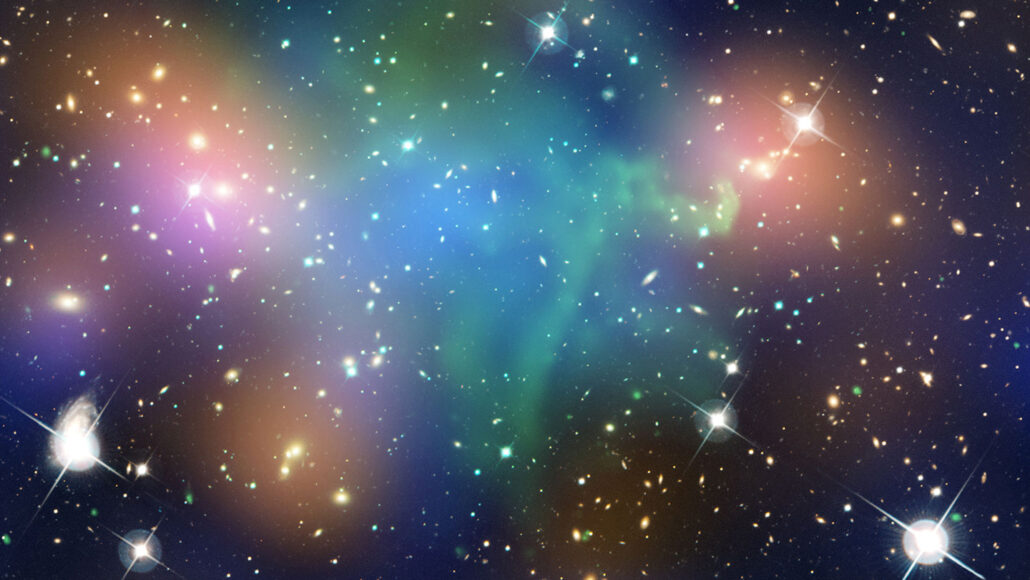Questions for “Our feverish universe is getting hotter every day”

Hot gas in a galaxy cluster appears green in this image of the Abell 520 cluster taken by many telescopes. The cluster is about 2.4 billion light-years away. A new study shows hot gas like this has been getting hotter as the universe ages.
NASA, ESA, CFHT, CXO, M.J. Jee/University of California Davis, A. Mahdavi/San Francisco State University